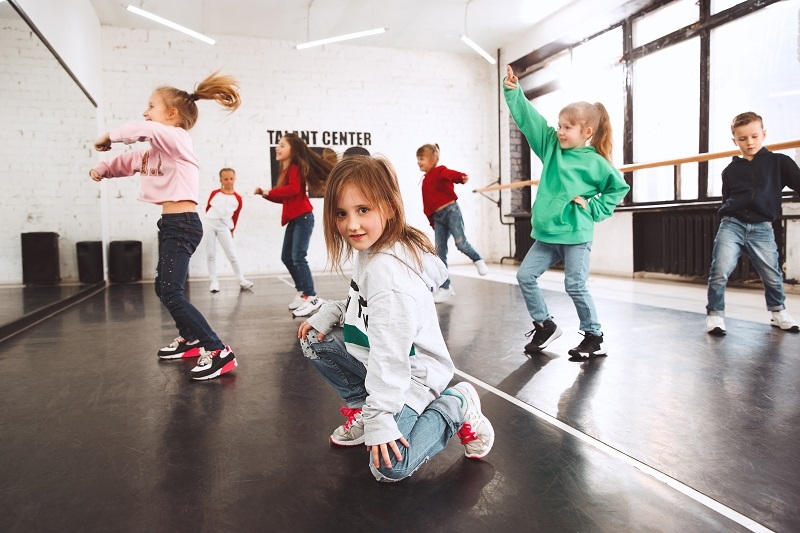
Ask any seasoned performer what is choreography and you’ll get an answer that sounds part art, part science. At its simplest, choreography is the intentional arrangement of movement. But in practice, it’s a creative process where a choreographer designs not just steps, but a complete movement experience.
In dance choreography, that means deciding how bodies move in time to music, how they travel across space, and how energy shifts throughout the performance. A choreographer uses movement the way a composer uses notes or a painter uses color — to create meaning.
It’s more than “teaching steps.” It’s storytelling, emotion, and design blended into a physical language that audiences can see, feel, and remember.
Good dancers can move beautifully. But without dance choreography, their movements lack a shared direction. Choreography gives a performance its backbone — its rhythm, structure, and emotional arc.
A well-crafted choreographic design ensures the audience experiences a journey rather than a series of unrelated moves. It brings a sense of purpose to every step, turn, and gesture. This is why understanding the elements and principles of choreography isn’t just helpful — it’s essential for anyone serious about performing or creating dance.
Without choreography, you might have movement. But you won’t have art.
The elements of choreography are the raw materials choreographers work with. Think of them as the “what” in dance design. The Kennedy Center breaks them into five core categories:
Every choreographic decision involves at least one of these elements — often several at once.
Related reads: Mastering the Dance: Essential Choreography Tips for Dancers
If the elements are your tools, the principles of choreography are your blueprint. They dictate how you organize movement to make it engaging and coherent.
The five principles of choreography most widely recognized are:
When someone asks what are the principles of choreography, this is the list they’re talking about. And applying these rules is what separates a forgettable routine from one that sticks in the mind.
The elements and principles of choreography aren’t separate checklists. They work in tandem. The elements (body, action, time, space, energy) give you your movement vocabulary. The principles (unity, variety, balance, rhythm, contrast) tell you how to arrange that vocabulary into something that feels intentional.
For example: you might use the element of “space” by staging a dancer downstage center, then apply the principle of “contrast” by having a sudden shift to dancers filling the entire stage. Or you might use “energy” by starting with slow, heavy movements, then apply “variety” by switching to sharp, quick jumps.
This layering of choices is what gives dance choreography its depth.

Learning how to choreograph a dance isn’t about copying someone else’s style. It’s about developing a process that blends creativity with structure.
Ask yourself: Is this a narrative piece, an abstract exploration, or a mood-driven sequence? Your answer will guide your movement choices.
Your soundtrack will set tempo, phrasing, and emotional tone. You can choreograph without music, but most beginners find it easier to work with a strong rhythmic base.
Experiment freely. Play with levels, dynamics, and shapes. Don’t censor yourself at this stage — capture everything.
Sketch where dancers enter, move, and exit. Plan formations, angles, and transitions between groupings.
Weave unity, variety, balance, rhythm, and contrast into your movement sequences.
Divide your choreography into sections — introduction, build, climax, resolution — and design smooth transitions between them.
Run the choreography with dancers. Adjust spacing, timing, and energy flow until it feels seamless.
Video rehearsals for reference. Even seasoned choreographers use this to spot inconsistencies.
Imagine a modern piece set to music that alternates between calm piano sections and intense drum beats:
This approach ensures the choreography is both cohesive and captivating.
Anyone can memorize dance moves. But without the elements and principles of choreography, it’s just movement without meaning.
Understanding what is choreography is about recognizing its role as a design process — one that blends creativity, technical skill, and audience awareness. The five principles of choreography aren’t arbitrary rules; they’re proven tools for building performances that connect and endure.
Whether you’re learning how to choreograph a dance for your first recital or refining a professional piece, mastering these principles will elevate your work from competent to unforgettable.
Must check: Top 10 Dance Choreography Themes That Stand Out
Choreography is not about filling music with movement. It’s about making deliberate choices — using the elements of choreography as your raw materials and the principles of choreography as your design guide.
When you blend body, action, time, space, and energy with unity, variety, balance, rhythm, and contrast, you create more than a routine. You create an experience.
So next time you ask yourself what is choreography, remember: it’s the art of shaping movement into something meaningful, memorable, and uniquely yours.
This content was created by AI